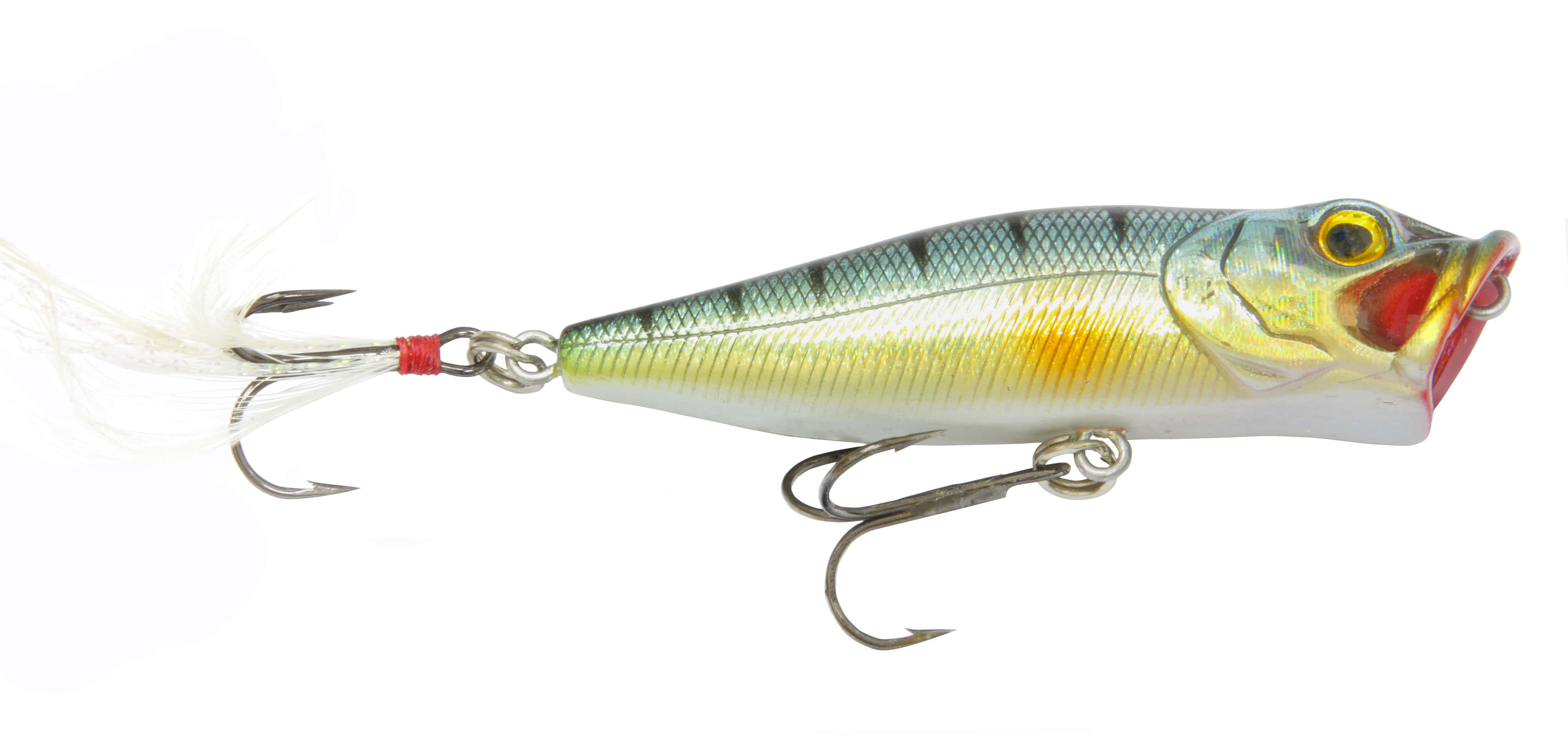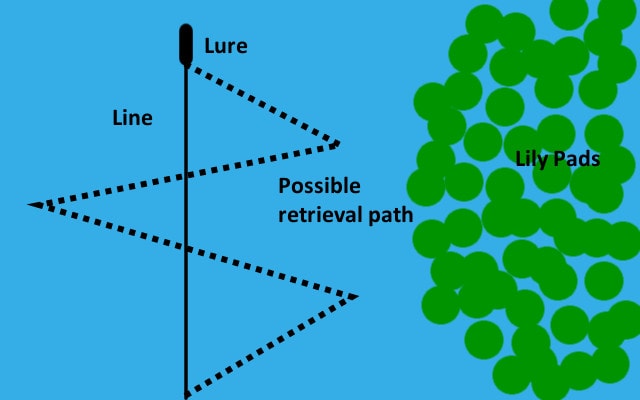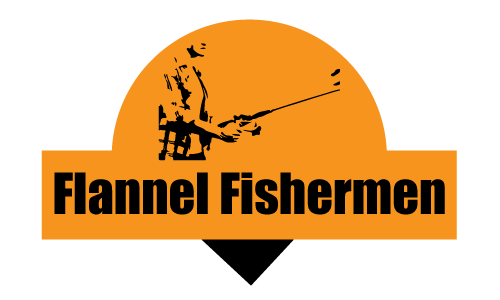How to Use a Topwater Lure

Topwater lures can be really effective, especially for bass, and in our opinion, they are one of the more fun lures to cast and retrieve. You can get lots of different types of topwater lures to best fit the conditions and your preferences. For example, the lure in the image above would be classified as a popper, but the topwater lure we reviewed in our Best Bait for Bass article was classified as a prop bait (specifically, a torpedo lure).
While many different topwater lures can be used for a given situation, knowing some of the key differences between them can help you optimize your selection for the current conditions. We will also provide some info and resources that will provide some tips on how to properly work a topwater lure.
When to Use a Topwater Lure
A topwater lure is meant to mimic the action of the surface prey that fish feed on, usually with some exaggeration of the action. You will find topwater lures effective in many different conditions, but I usually find them to be most effective early in the morning or in the evening 1-2 hours before sunset. This is when a lot of the surface prey is present (mainly bugs), and also corresponds to times when you see more fish jumping.
I have also had success with topwater lures during the day, usually when it’s cloudy, but I’ve had success in a lot of conditions. One condition that I have NOT tried them in are the extremes of water temperatures (i.e. very cold or warm), but many anglers find them to be less effective in these conditions. I wish I could say this was planned, but it’s just a lucky coincidence.
What got me hooked on topwater lures (no pun intended) was the immediate success I had with my first prop bait, which was a torpedo lure. I picked one of these out from the local tackle shop on my birthday when I was kid simply because it looked cool. I first tried it out at my local fishing hole that was mainly stocked with bass and perch. I was caught off guard when I had a bite on my first cast, and while I didn’t hook it, I caught a few throughout the rest of the evening.
I didn’t realize it at the time, but one of the reasons I had a lot of success was because I was casting around a couple large patches of lily pads. There were always lots of tadpoles, frogs, and bugs present, especially during the early morning and before sunset, so in hindsight, it’s not overly surprising I was able to catch some nice bass.
Therefore, our fishing expert flannel recommends a topwater lure in many situations, but definitely dawn, dusk, cloudy conditions, and definitely around any surface vegetation where surface prey like to hang out. I would also recommend a topwater lure anytime when you want to mix things up, as they will provide some of the more exciting strikes one can experience.
Popular Types of Topwater Lures
Poppers
These are arguably the most popular topwater lures and is the type of lure depicted in the image at the top of this page. You may be able to imagine that when the popper is retrieved, the water pushes back against the front of the lure where the concave indent is (head of popper, where lip would be on a crankbait).
This clearly isn’t a hydrodynamic design, but in this case, that’s what you want. Upon retrieval, the lure will pop up, jump around, and create noise from the splashing. The action and noise are attractive to fish feeding on surface prey, especially bass. Try retrieving a few feet at a time, letting it sit, and repeat. Be ready at all times though, as often times the fish will strike when the lure is sitting motionless (it still needs the action to initially attract the fish).
Check out Scott Martin’s tips for working a popper in the video below!
Propbaits
This is the category that my prized torpedo lure falls into. Propbaits typically have an additional moving component in the form of one or multiple propellers (props). As these lures are retrieved, they create a rippling effect in the water and kick up a small amount of water as well. You can hear them move through the water, and they are excellent for attracting bass in or around lily pads or other surface vegetation.
I have found success by employing a zig-zag retrieval technique as depicted in the image below. It’s basically like jigging, but instead of a vertical jig, you are jigging side-to-side in a horizontal fashion (across your body). Similar to prop baits, be ready to bring in any slack very quickly and always be ready to set the hook. Fish will often strike when it’s motionless, especially when close to vegetation.

Check out Terry Bolton using prop-baits for fishing bass. Notice the stop-and-go action he uses immediately upon retrieval. Also, he doesn’t need to cast far, just strategically. In and around cover is best, and in this case, the shoreline shrub provides a nice opportunity for him!
Buzzbaits
Buzzbaits are similar to spinnerbaits except they are a topwater lure. You can tell the difference at a quick glance by looking at the spinner component. A buzzbait’s spinner will sit in front of the bait, as opposed to a spinnerbait where the spinner sits more to the side and behind the bait.
I find buzz baits to be good in similar situations as a prop bait, but maybe a little more versatile. They are essentially a cross between a spinnerbait and a prop bait, maybe leaning closer towards a spinnerbait. This makes them great not only around cover but over and through cover as well. Try a similar retrieve to a prop bait, but be patient, making sure to employ a slow retrieve along with an erratic action.
If you find you’re hitting a lot of snags when fishing over or through cover, try adding a trailer for a little bit of buoyancy and protection. You can also use the line itself to provide some lift by increasing the angle. This can be achieved simply by keeping the rod tip more raised than you usually would during a retrieval.
What Color Should Topwater Lure You Use?
The best color scheme for a topwater lure is dependent on conditions but is also similar to lots of other lures, likely because they are often used for the same fish species. Here are a couple tips for selecting a good color topwater.
White is often a good starting point with many lures. It provides good contrast, is bright but not overly artificial, and the scheme itself is as simple as it gets. It may not be the best color (or lack thereof) for every situation, but it’s reliable enough that, if you’re not sure about what to select, it can be an excellent starter.
In most water conditions, a shad color scheme will work great. This is best used in clearer conditions when the fish, especially bass, have a good idea of what it looks like. Remember, you’re trying to mimic local prey and sometimes local vegetation, so this can be a nice robust choice.
When the water is a bit murkier, it’s a cloudy day, or you’re fishing at night, try a black topwater. This provides excellent contrast in these conditions, as even when it’s totally clear, light reflecting off the lure will be limited due to the fact that it’s above the fish (so not much light is reflecting off the bottom of the lure to the fish’s eyes).
If you think the fish are still having a hard time detecting the lure, especially in darker conditions, you could try using a topwater that has a couple bright accents, with it be in the form of a pattern or something more simple like a red eye. Chartreuse is always a safe bet in this case.
Summary
Use a topwater anytime you’re fishing bass, in and around surface vegetation, or simply want to try something new and exciting. Remember to employ a “jig-like” retrieval, and always be ready to set the hook, as the fish will often bite when the lure is motionless. Choose simple prey-like color schemes, or a simple white or black as well. Furthermore, check out the videos above for some great pro tips on working a topwater lure, as well as some of the more subtle aspects of choosing the correct topwater.
